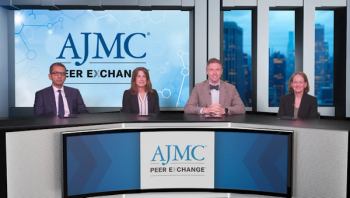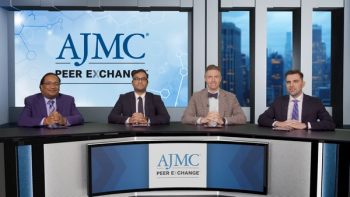
EoE Research Examines Long-term Efficacy of PPIs in Responders
A recent study sought to address what is known about proton pump inhibitors (PPIs) as a therapy for eosinophilic esophagitis and long-term outcomes in patients who respond to them as a way to guide treatment decisions.
Proton pump inhibitors (PPIs) are a first-line therapy in
The researchers also looked at the impact of different dosing regimens on efficacy and to explore what clinical features, if any, were associated with eventual PPI non-response. The retrospective cohort study of newly diagnosed EoE patients ≥18 years was carried out at the University of North Carolina at Chapel Hill (UNC).
Patients had symptoms of esophageal dysfunction and esophageal eosinophilia (>15 eosinophils per high-power field; eos/hpf). They were eligible for study inclusion if they were responsive to high dose PPI-only therapy, at a total daily dose of 40mg–80 mg of any of the approved medications, for at least 8 weeks. The medications were omeprazole, pantoprazole, esomeprazole, lansoprazole, and rabeprazole.
Patients were considered to have responded if they had a peak esophageal eosinophil count of <15 eos/hpf.
Of the 138 adult patients newly diagnosed with
Of those 138 patients, 50 had long-term endoscopic follow-up, 40 had clinical follow-up, 10 changed treatments, and 38 had no long-term follow-up.
Of the 50 patients who were followed long term, their histologic response rate was 60% and their clinical response rate was 64%; mean follow-up time was 3.6 (2.9) years.
The peak eosinophil count dropped from an average of 65.9 (50.7) eos/hpf before starting PPIs to 5.2 (4.6) eos/hpf after initial PPI therapy, and then increased to 22.0 (33.0) eos/hpf by the time of the final endoscopy.
Of those who were scoped as part of follow up, 14 maintained stable PPI dosing, 3 had increased dosing, and 33 had decreased dosing.
The mean PPI dose fell from 49 (16) mg to 40 (19) mg by the time of the final endoscopy.
Younger age (adjusted odds ratio (aOR),1.05; 95% CI, 1.01–1.11) and dilation before PPI treatment (aOR, 0.21; 95% CI, 0.05–0.83) were the only factors linked with long-term loss of PPI response.
The authors said it was unclear as to why initial dilation before starting PPIs was linked with a loss of response; also, the fibrotic endoscopic findings of EoE were unchanged.
There were no substantial differences in baseline clinical, endoscopic, or histologic characteristics for the different follow-up groups.
Of the other 128 patients who did not undergo a later endoscopy:
- 40 (29%) had only clinical follow-up (mean follow-up time 2.4 [2.1] years)
- 10 (7%) switched treatments to a non-PPI therapy
- 38 (28%) had no long-term follow-up after their initial PPI response; 16 of those patients were never scheduled for a follow-up visit.
One limitation to the study was an inability to assess for medication adherence; knowing that may have added clarification to understanding what made a difference between responders and nonresponders authors said, noting “lack of adherence could underestimate medication efficacy and make long term response rates somewhat unreliable.”
In addition, the authors noted that CYP2C19 or STAT6 genetic variants can impact response to PPI treatments, but they did not assess that for their presence.
Reference
Thakkar KP, Fowler M, Keene S, Iuga A, Dellon ES. Long-term efficacy of proton pump inhibitors as a treatment modality for eosinophilic esophagitis.
Dig Liver Dis. Published online April 8, 2022. doi:10.1016/j.dld.2022.03.006
Newsletter
Stay ahead of policy, cost, and value—subscribe to AJMC for expert insights at the intersection of clinical care and health economics.













































